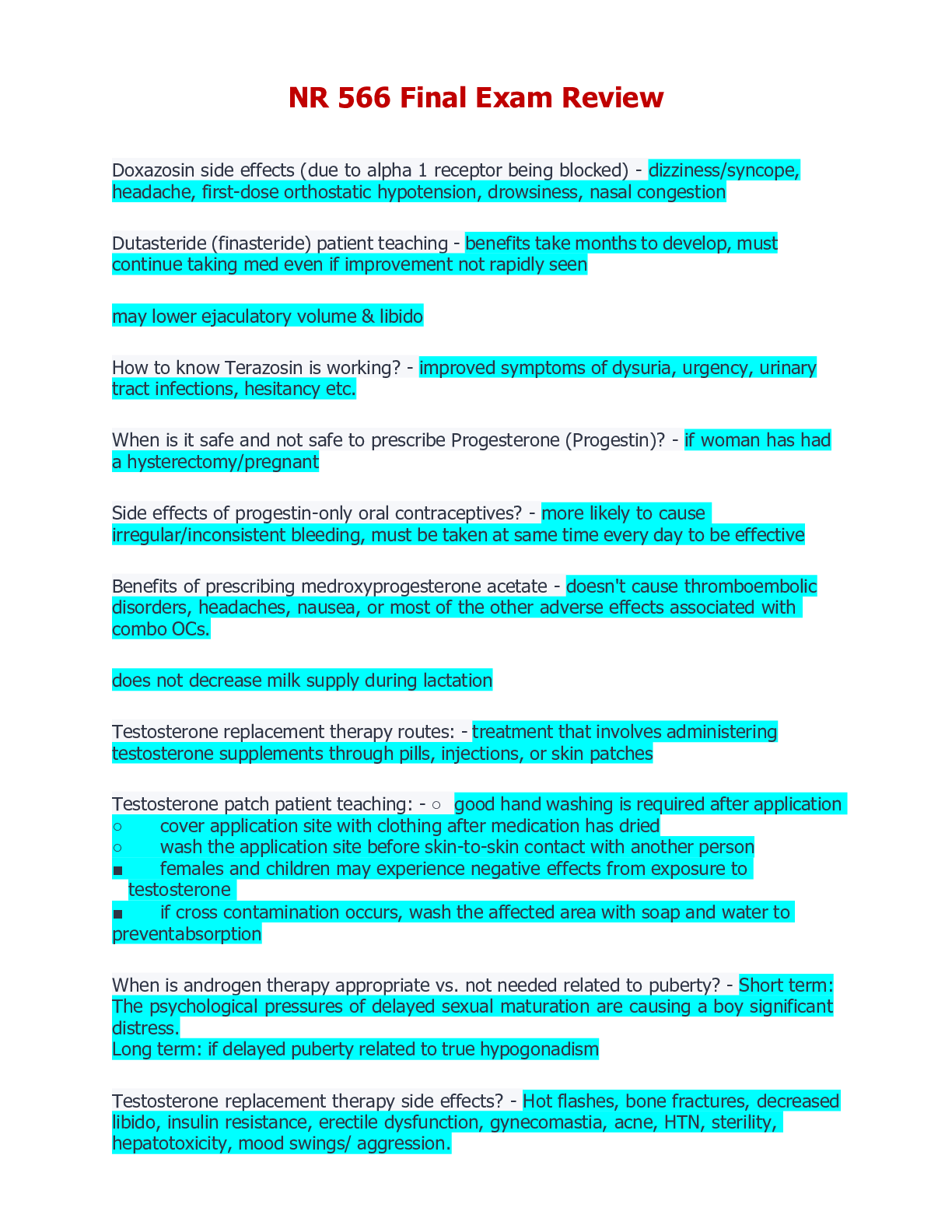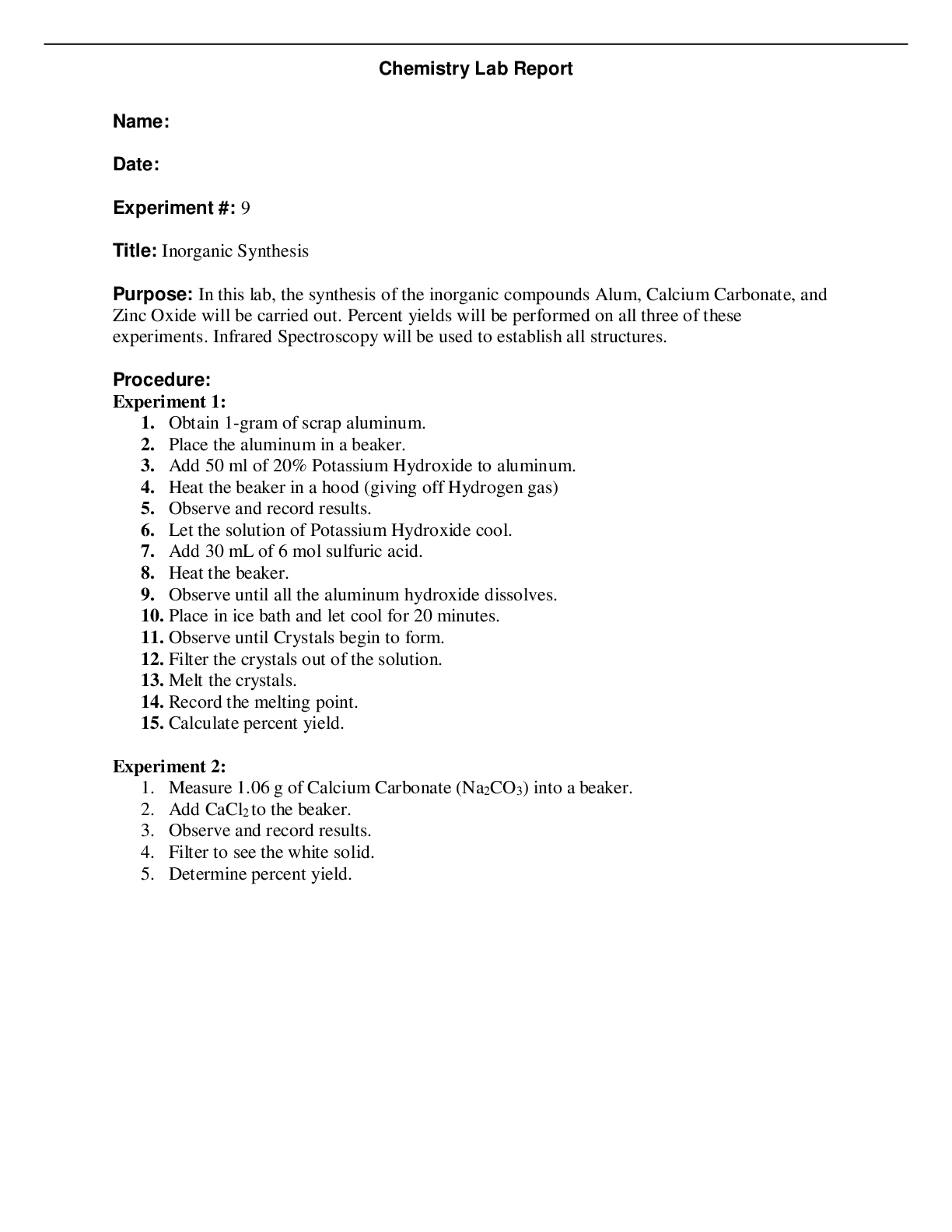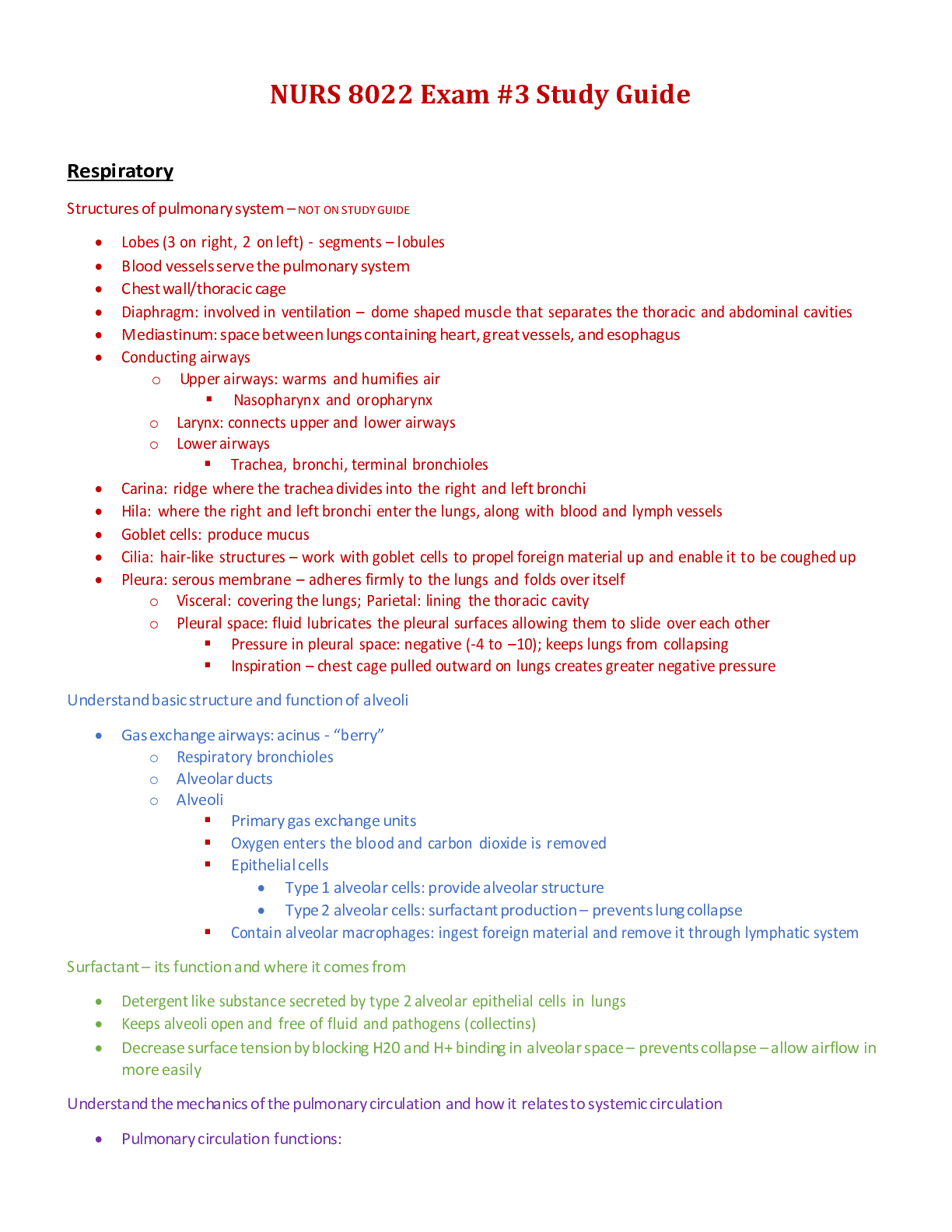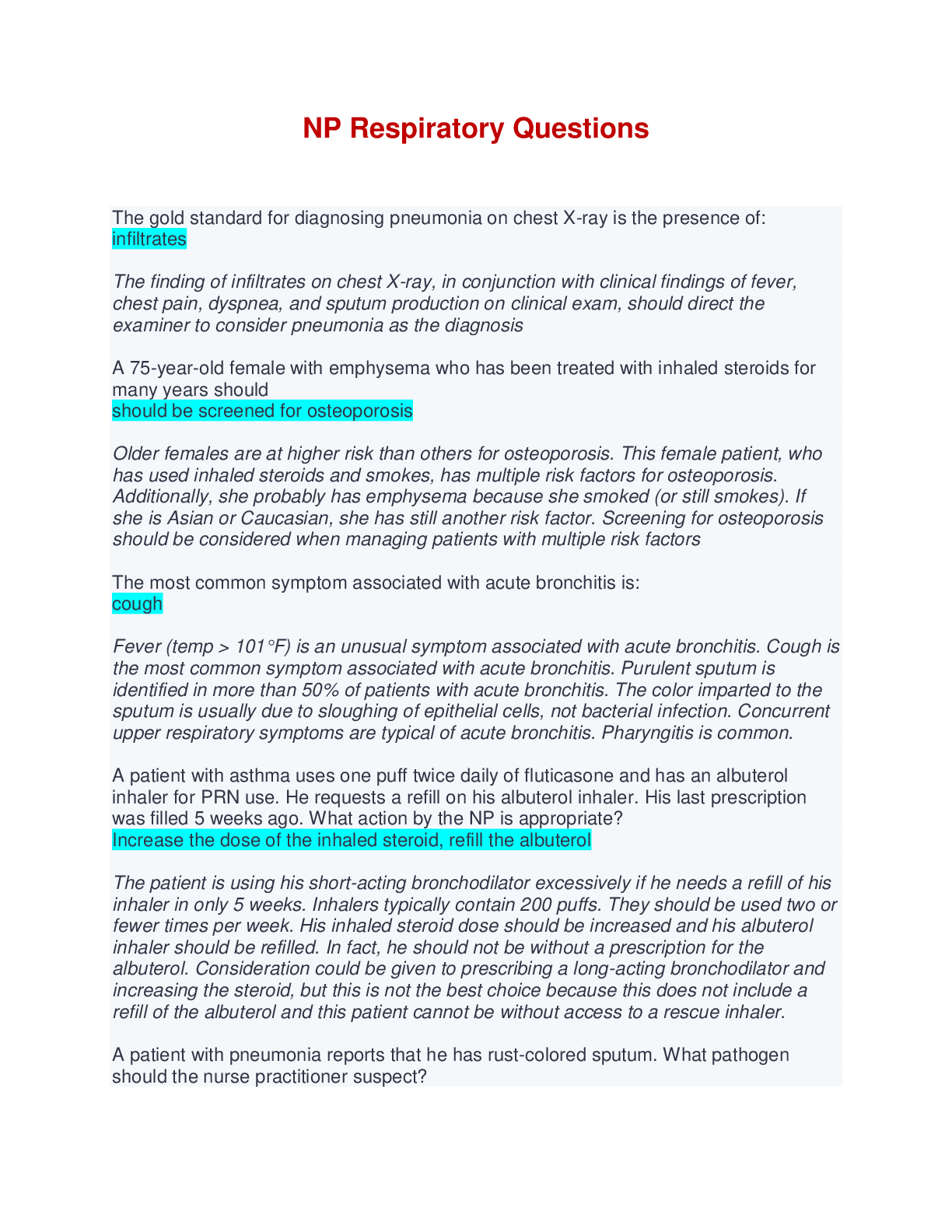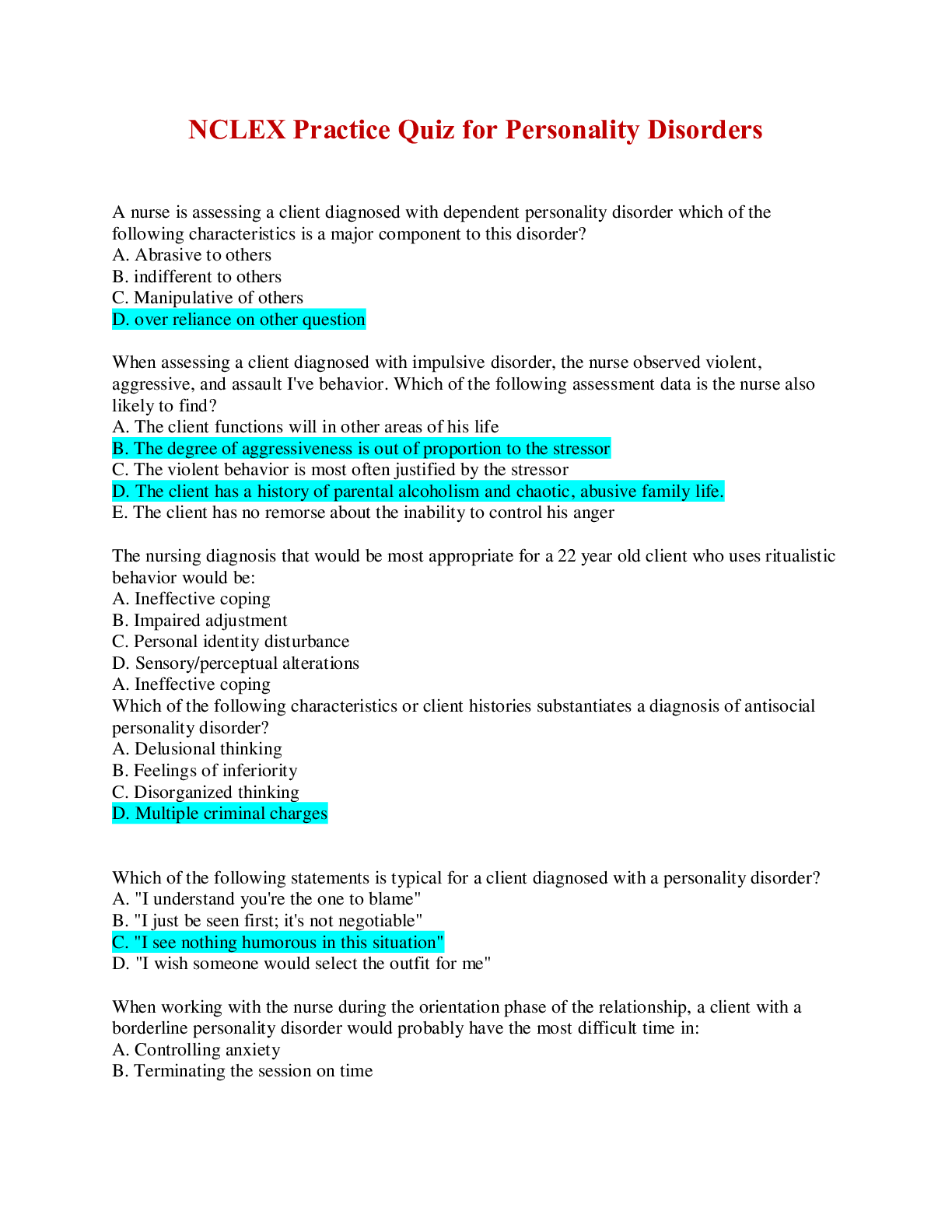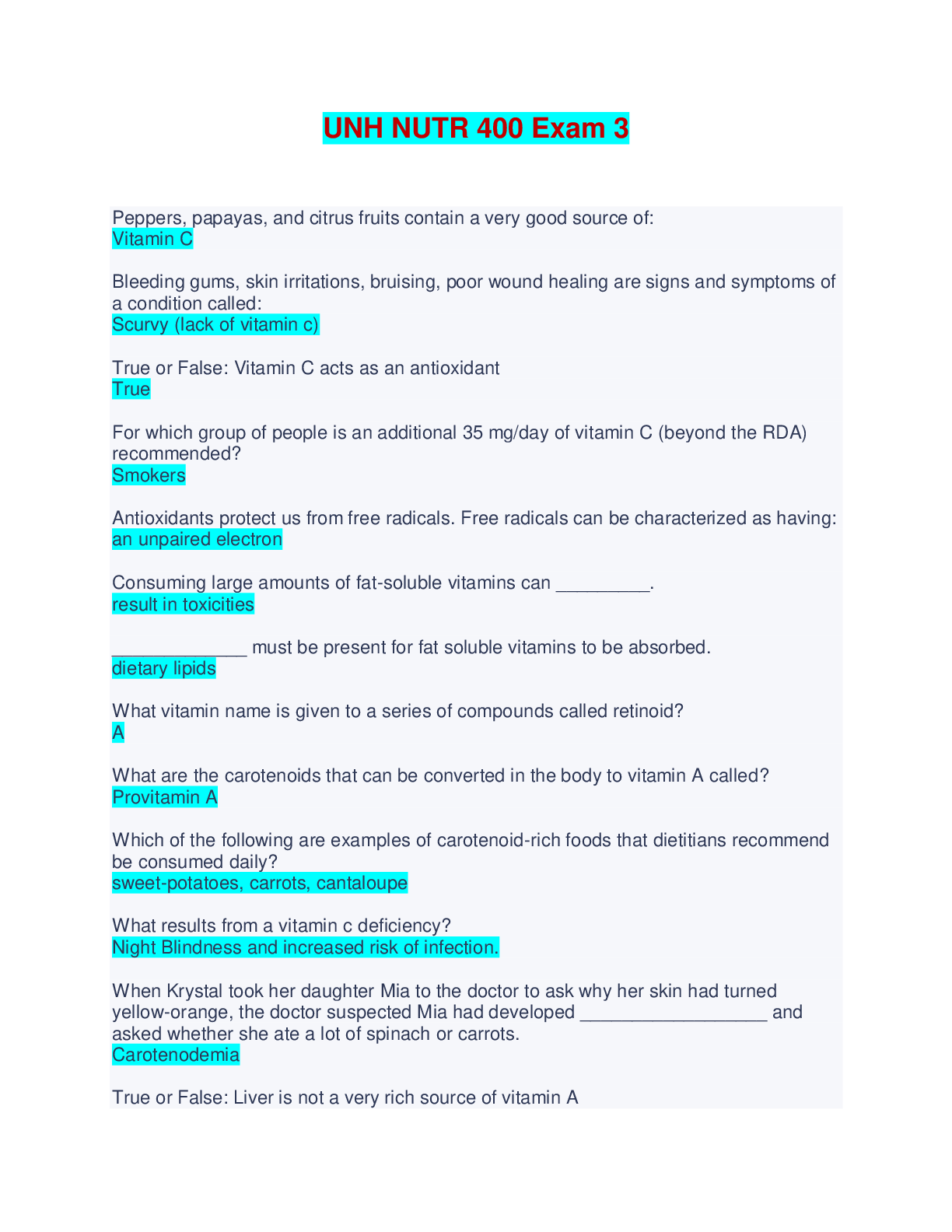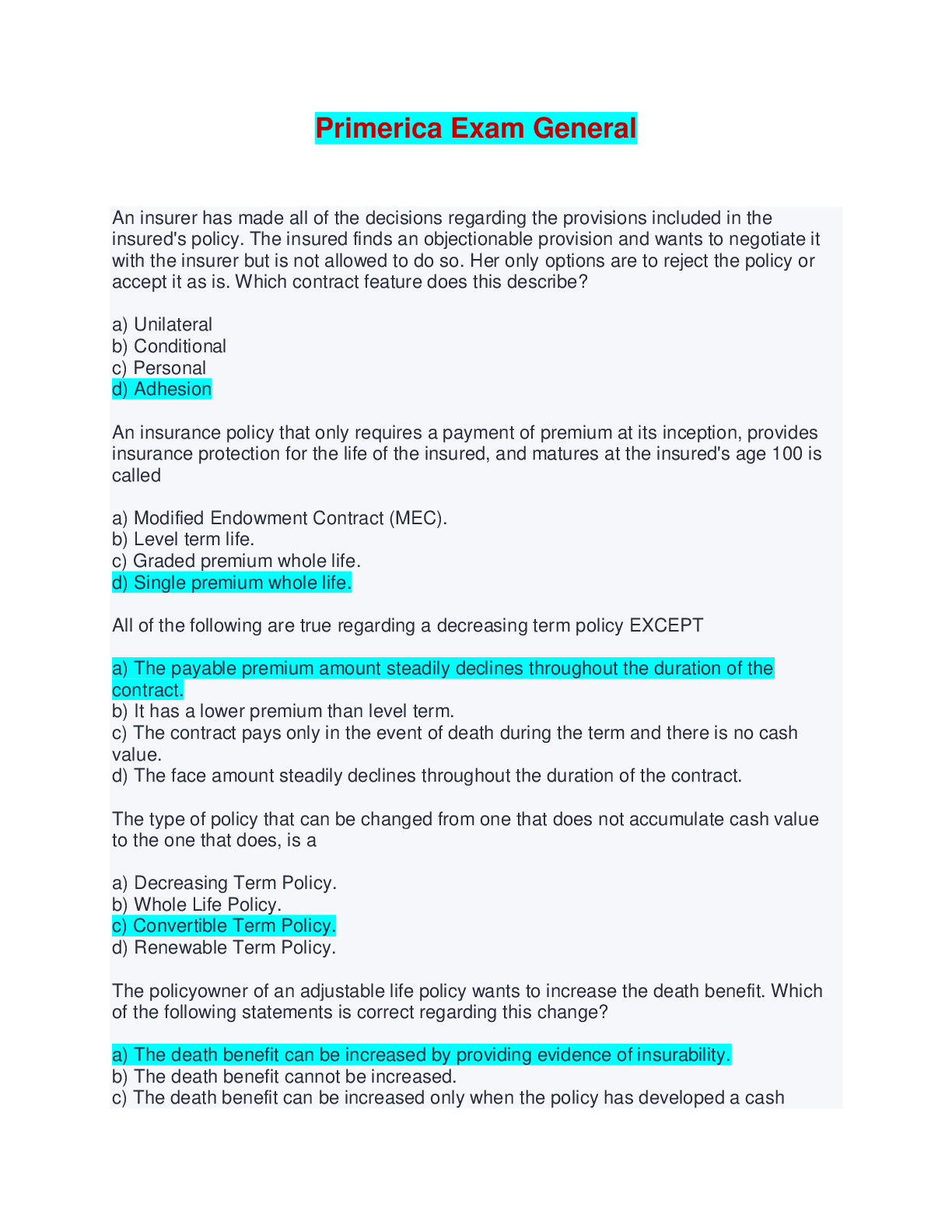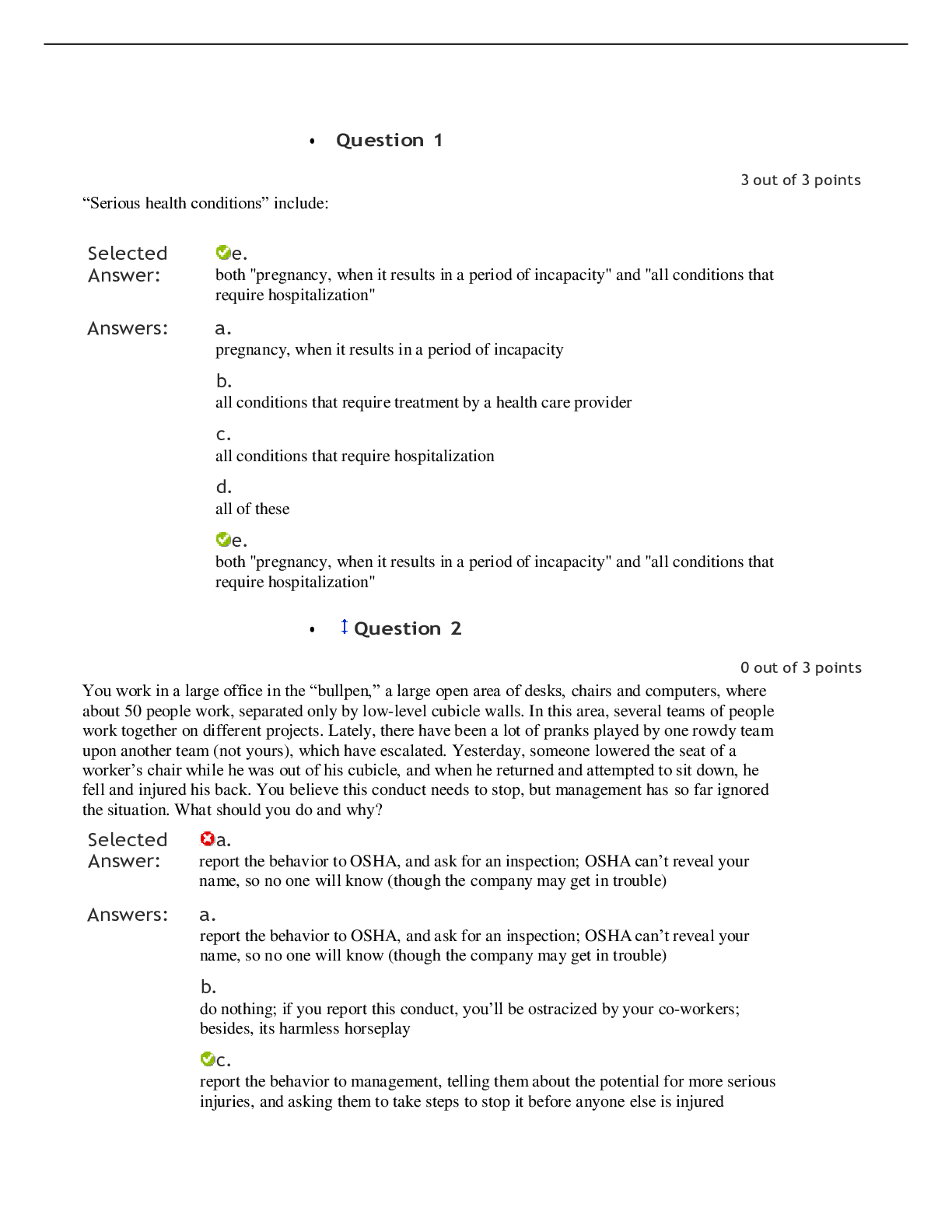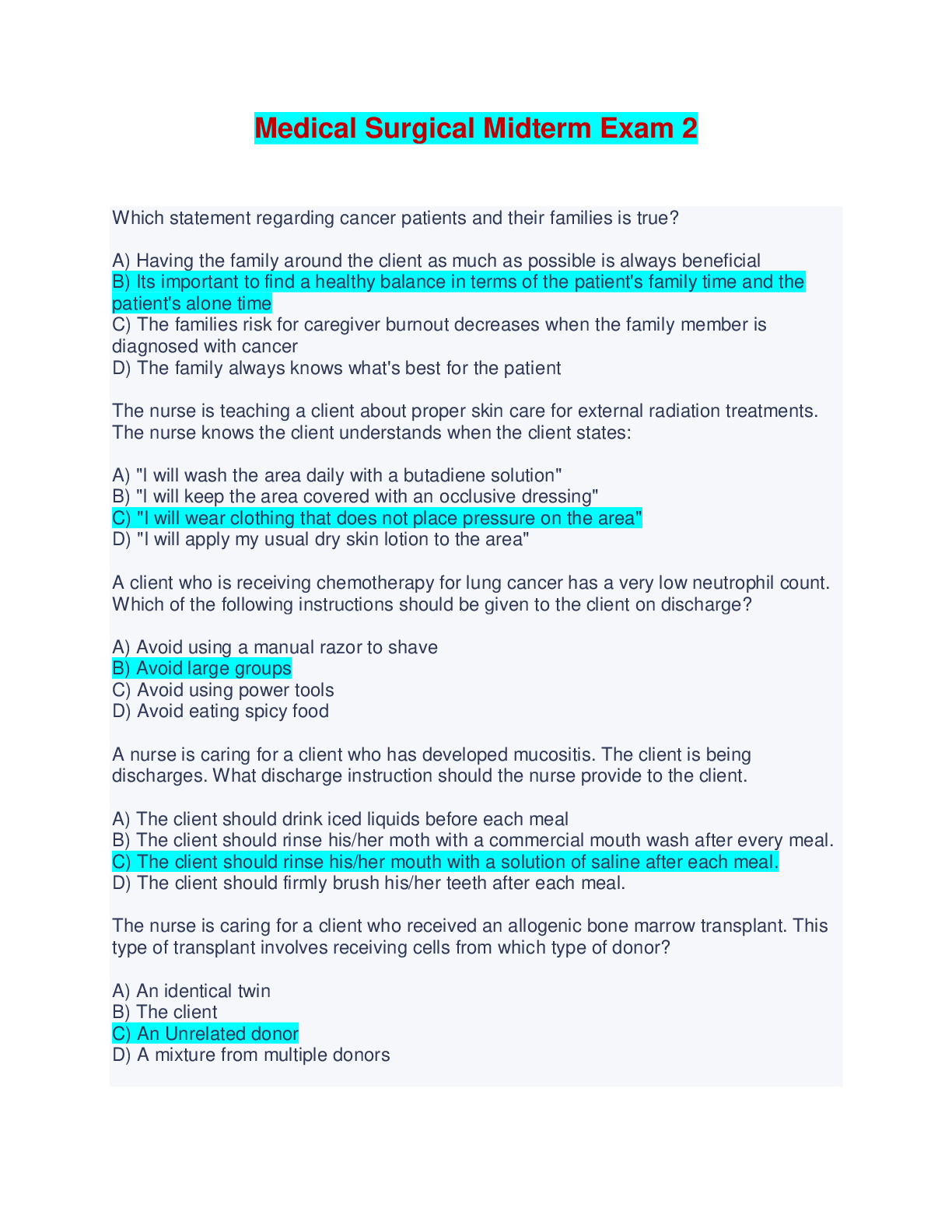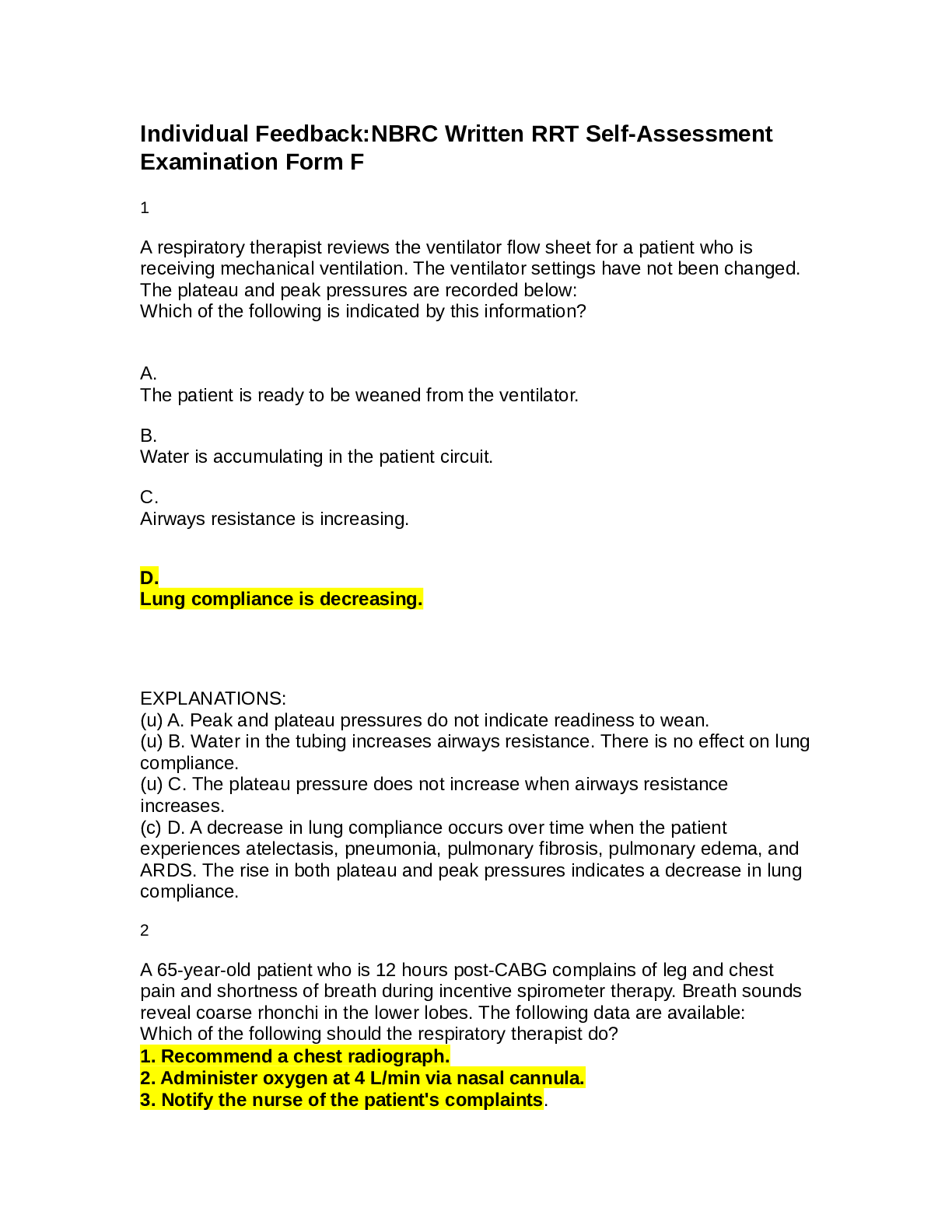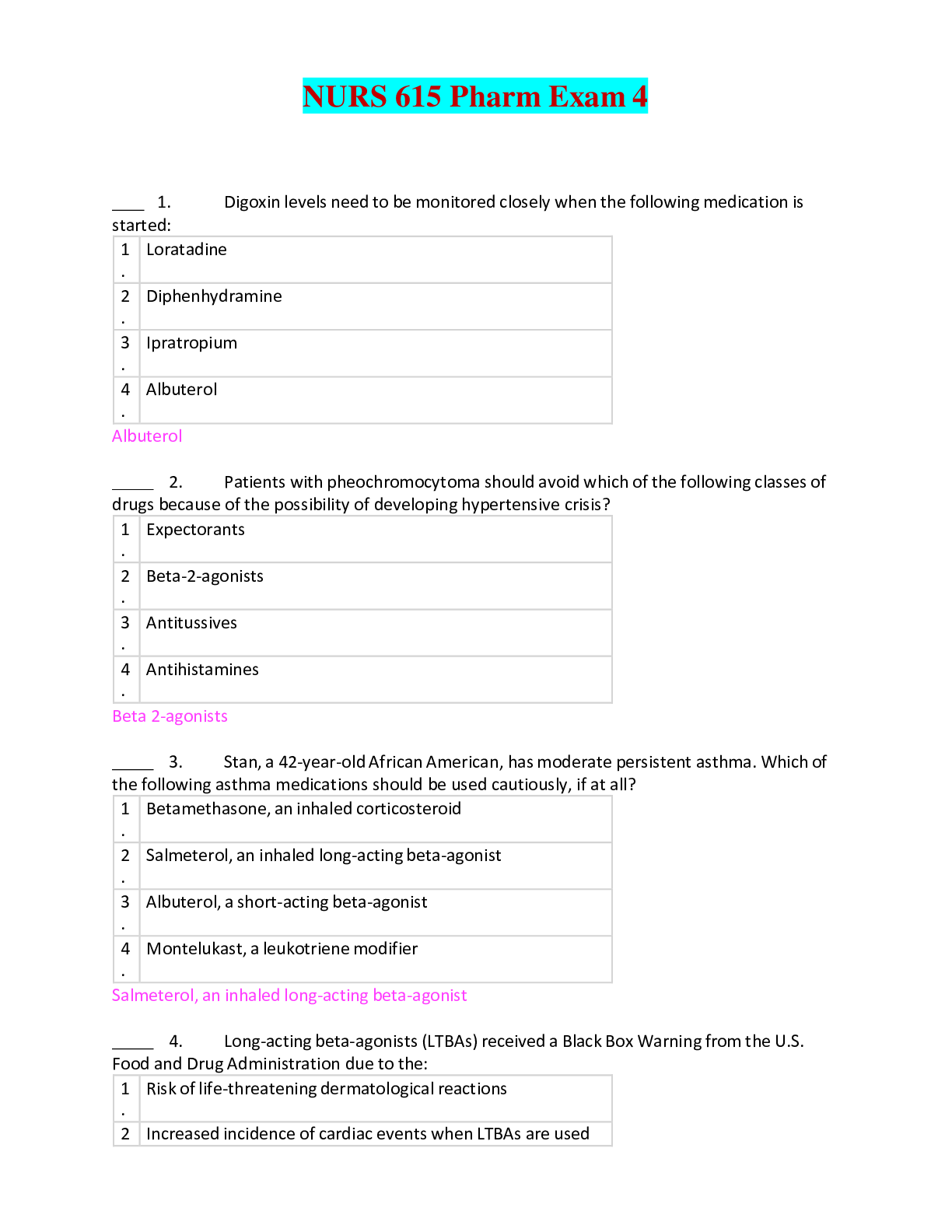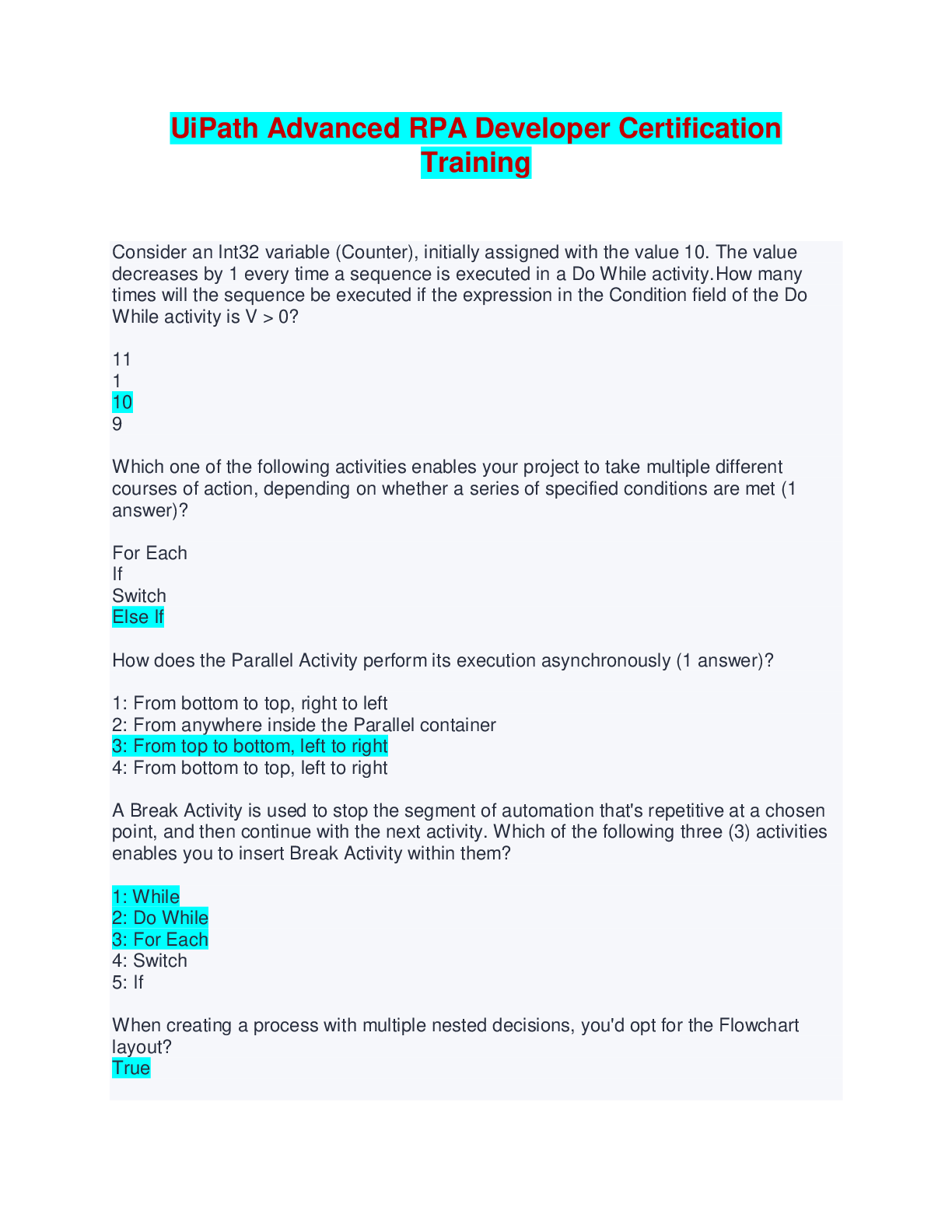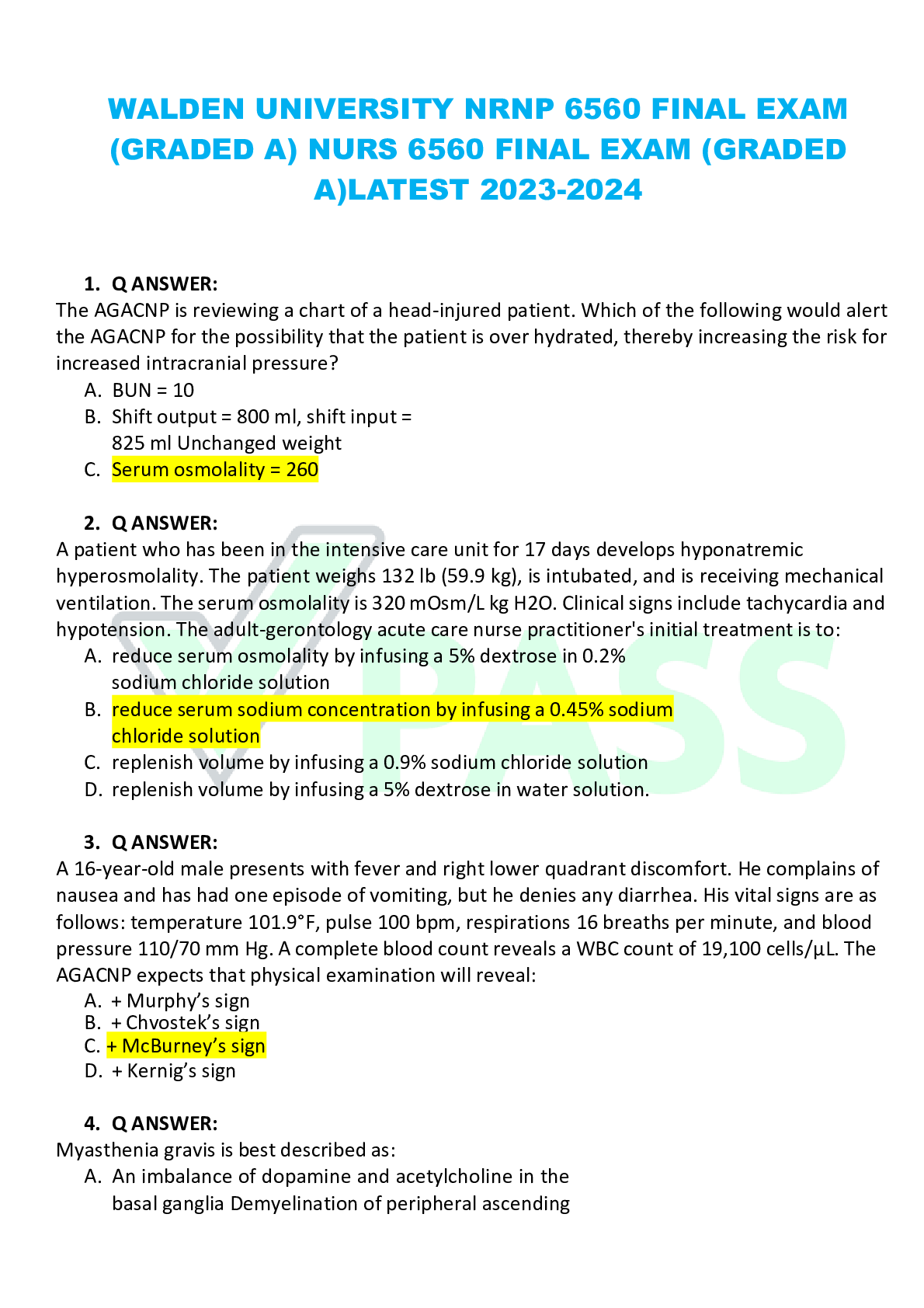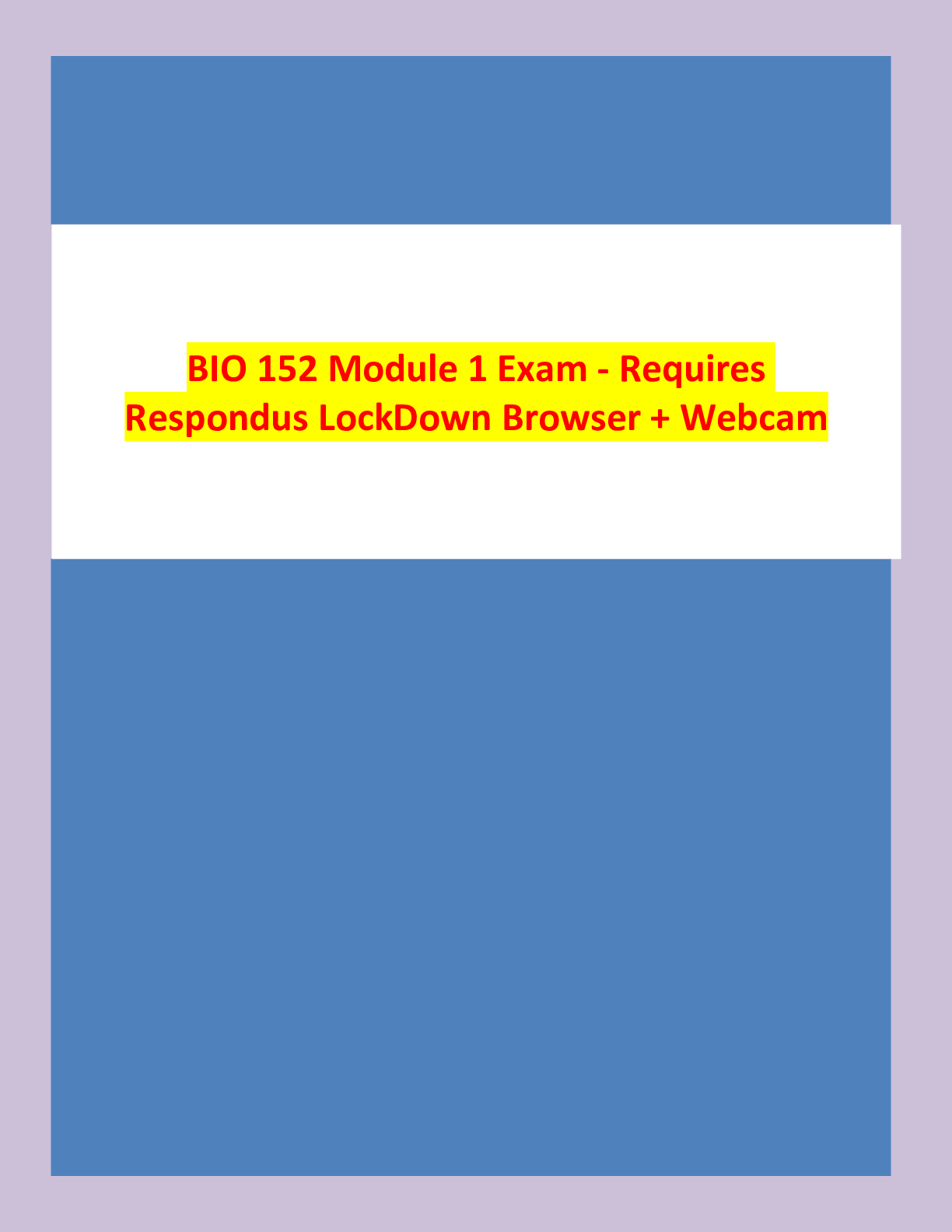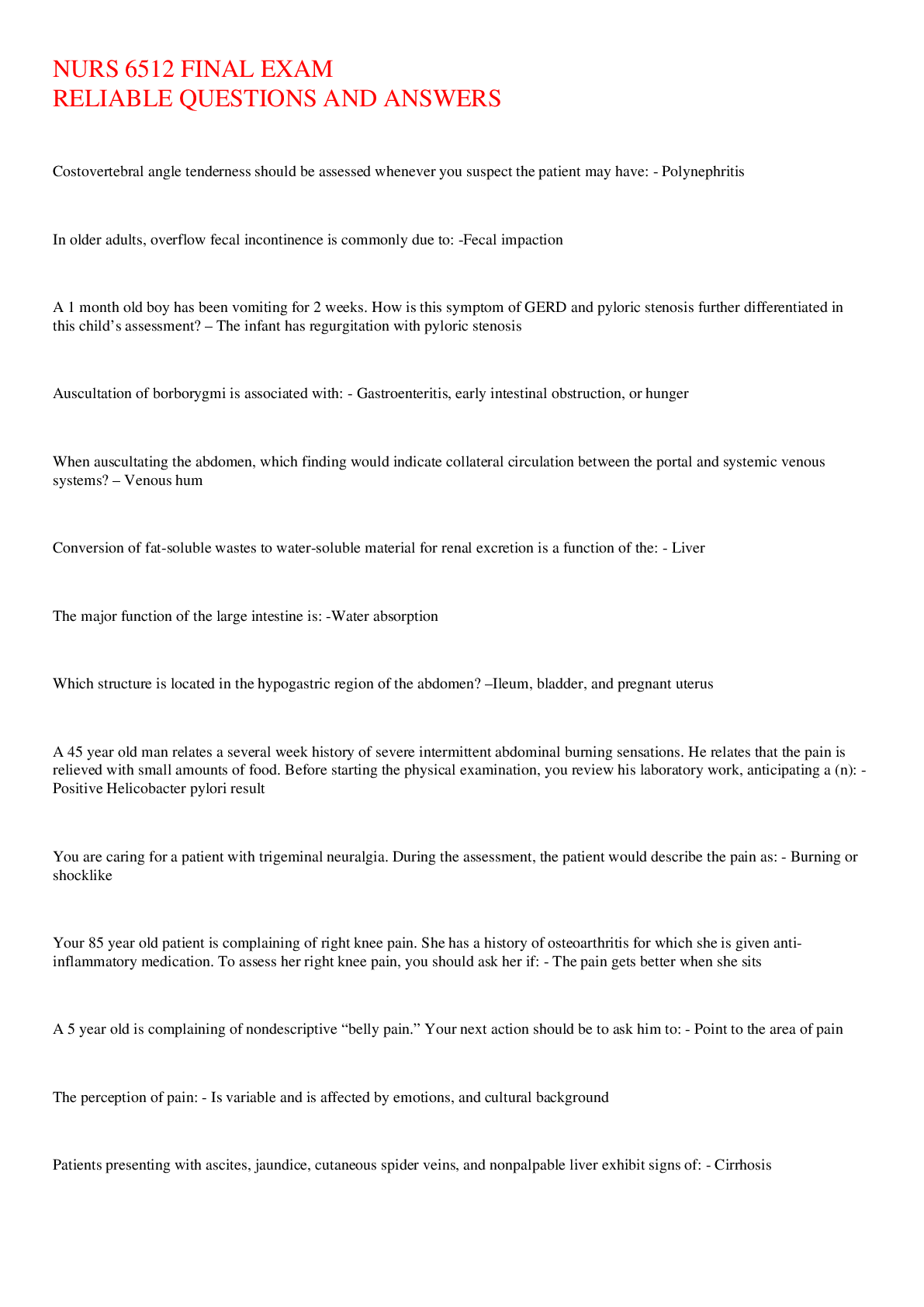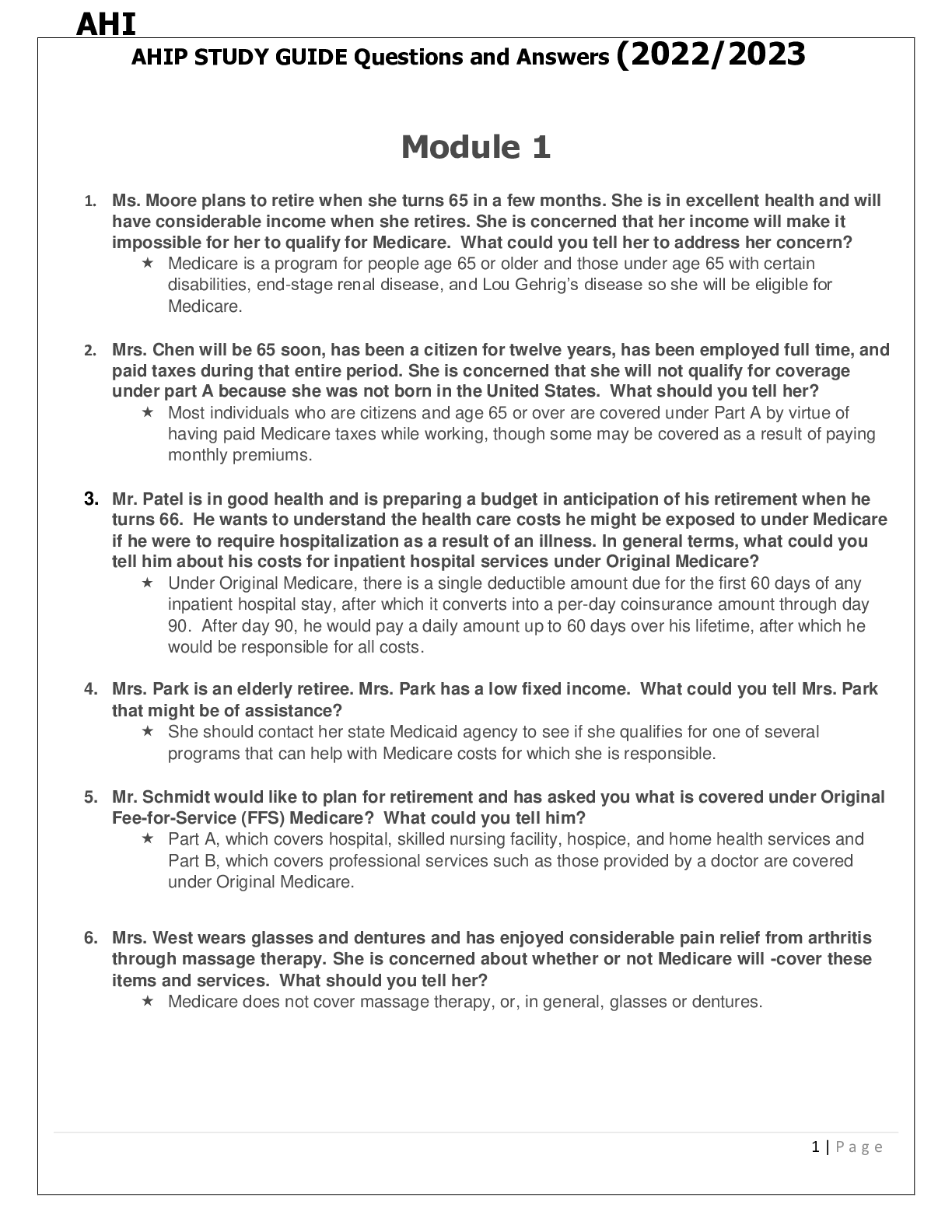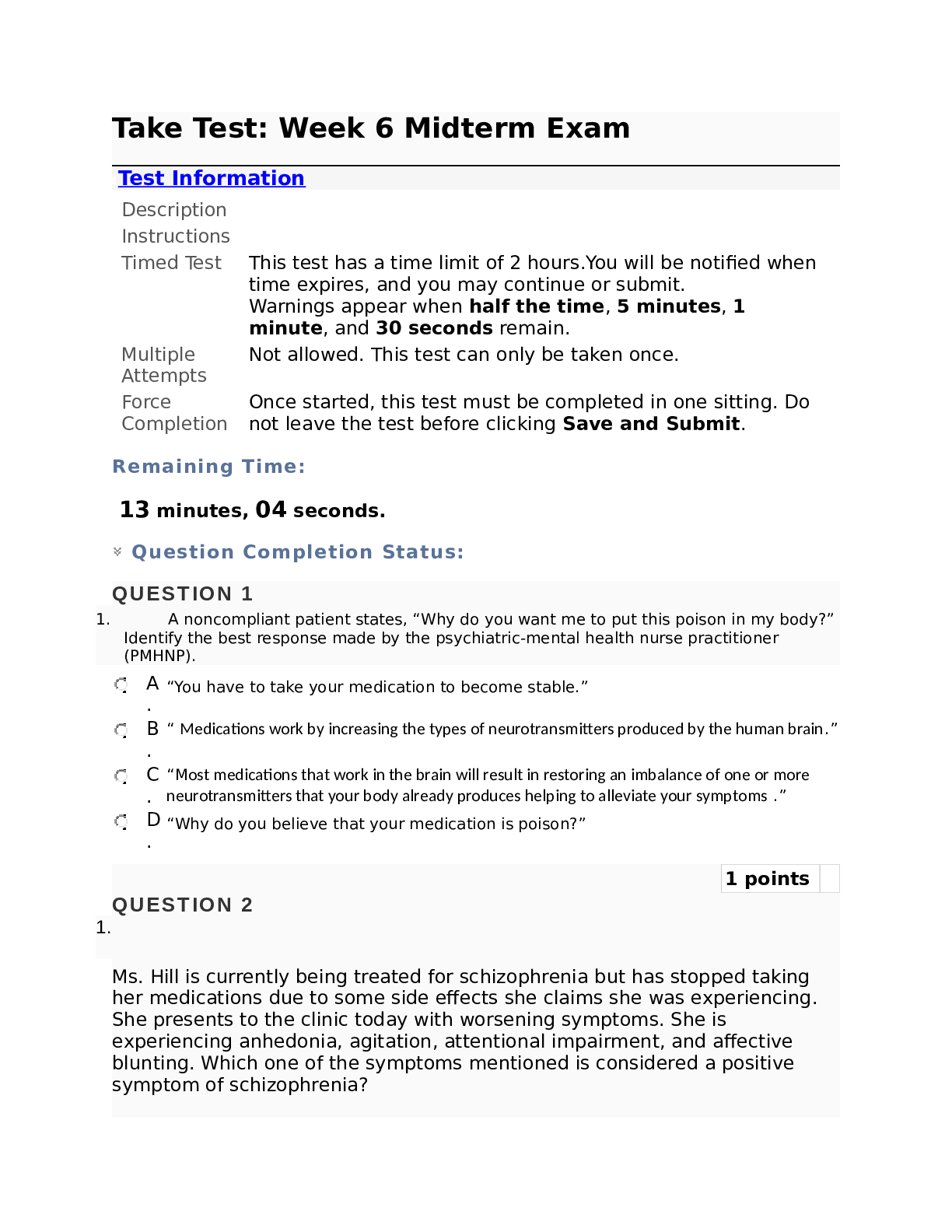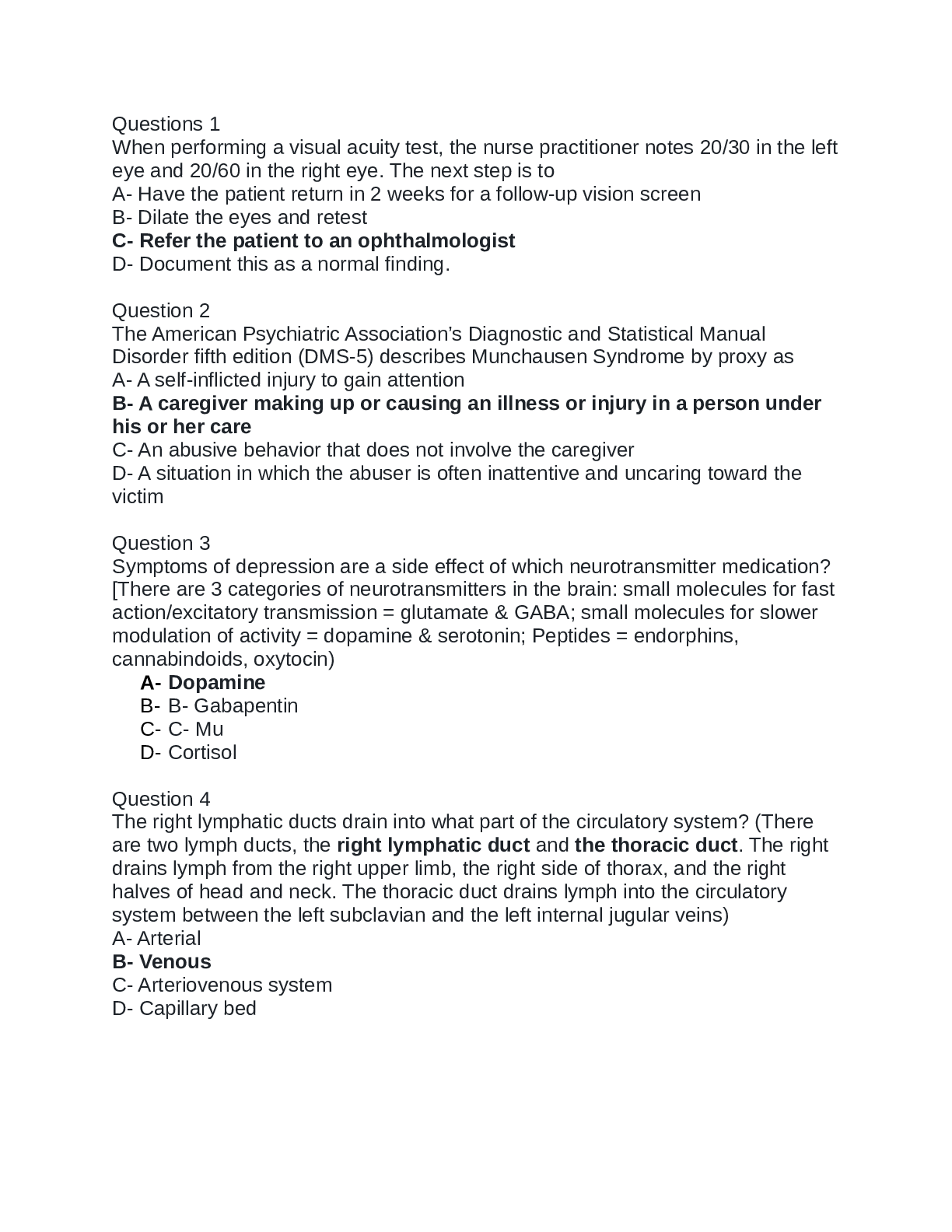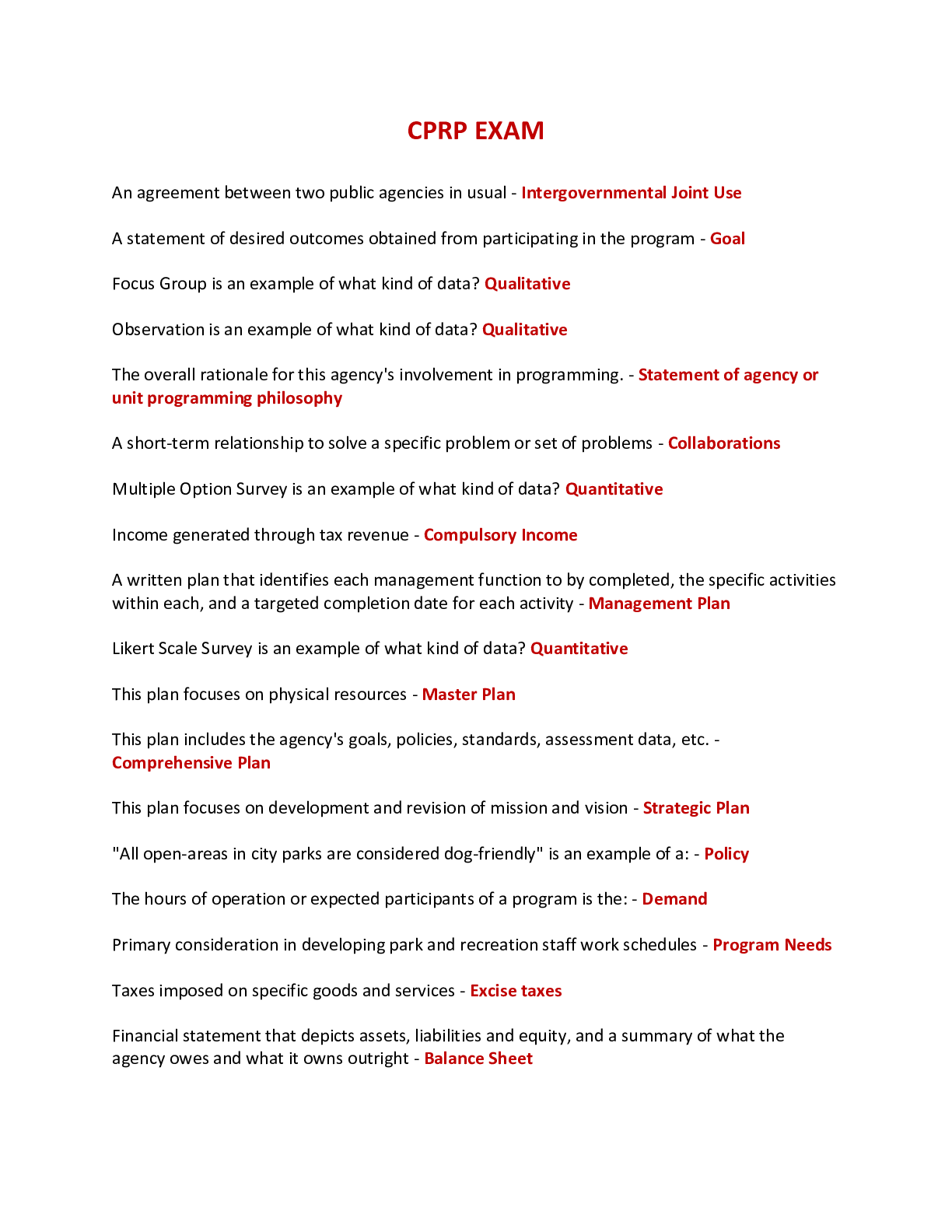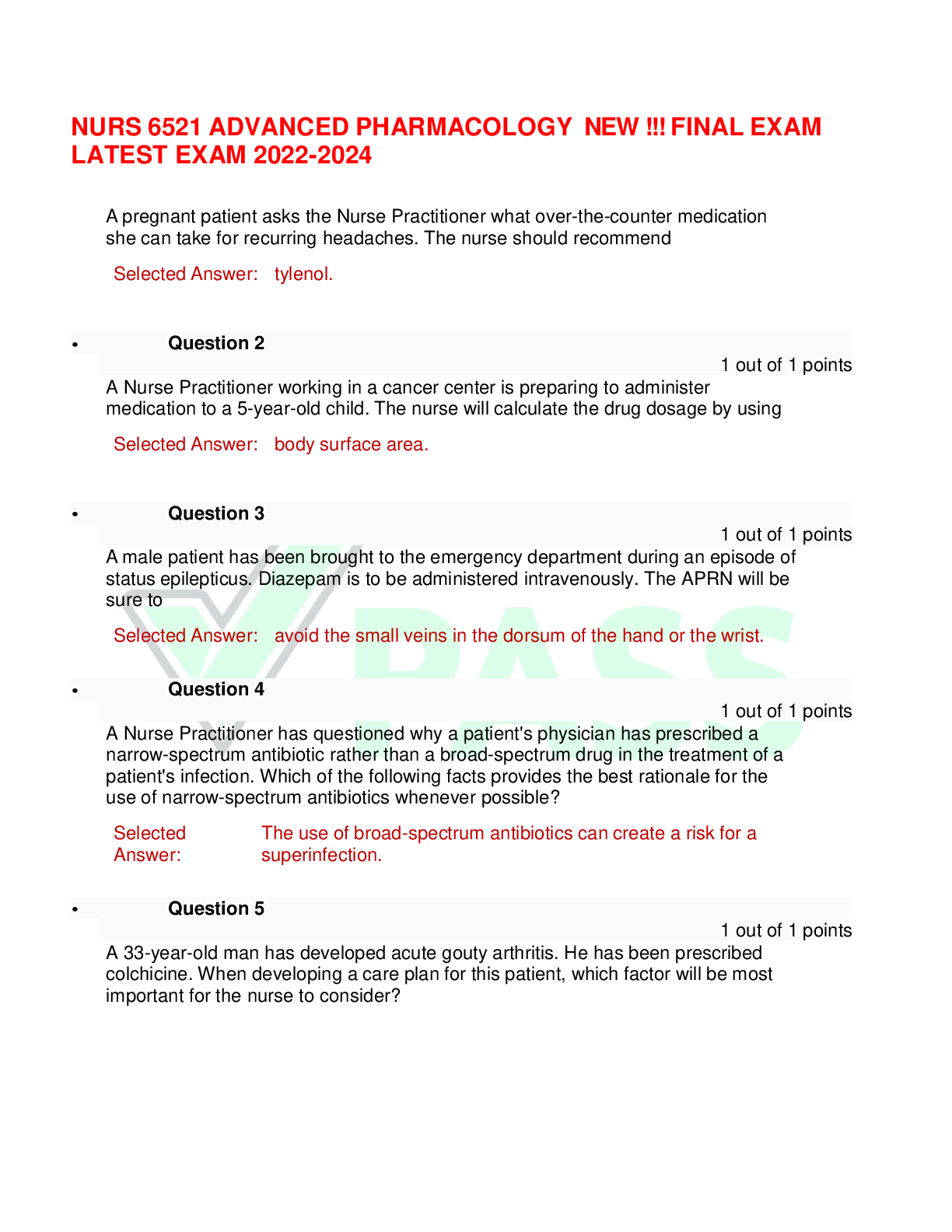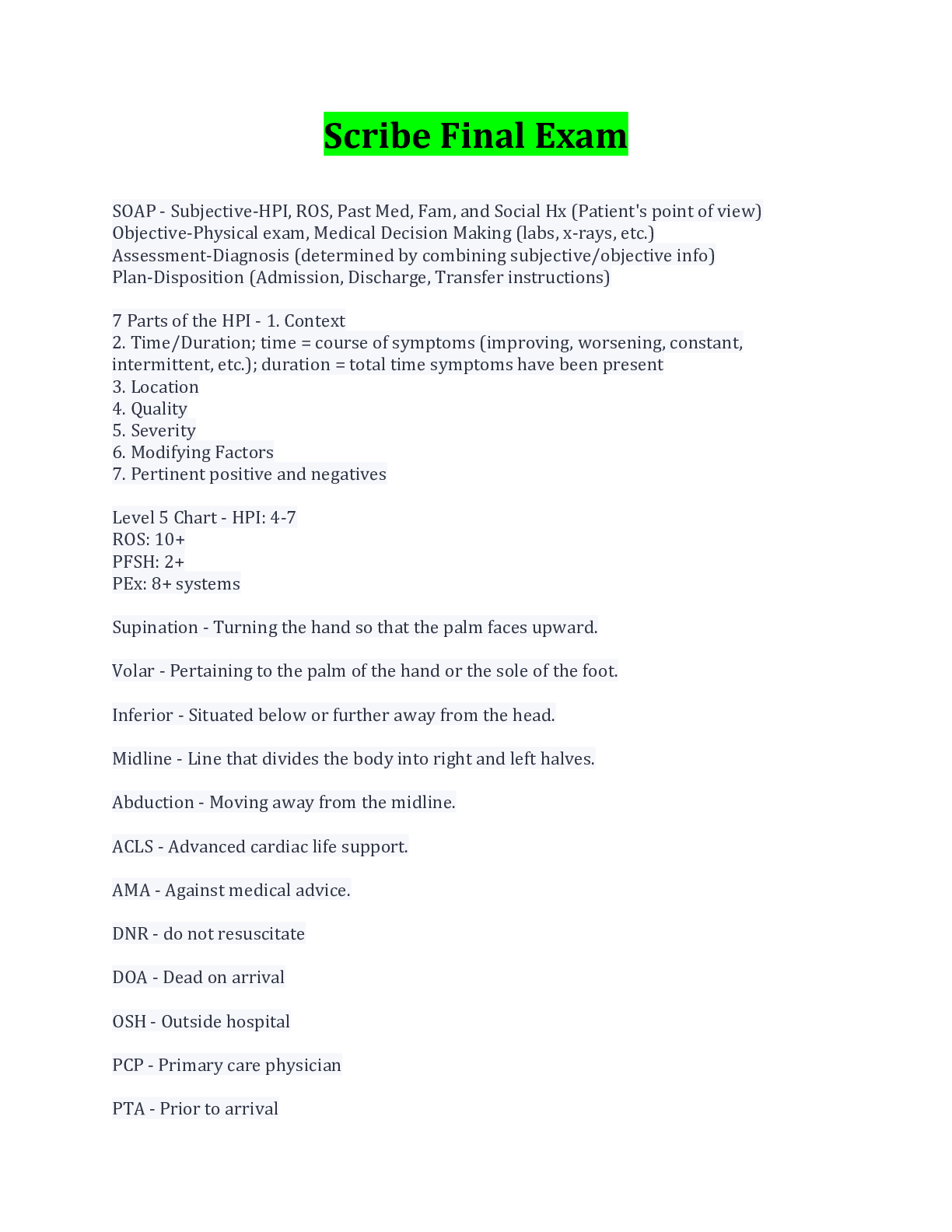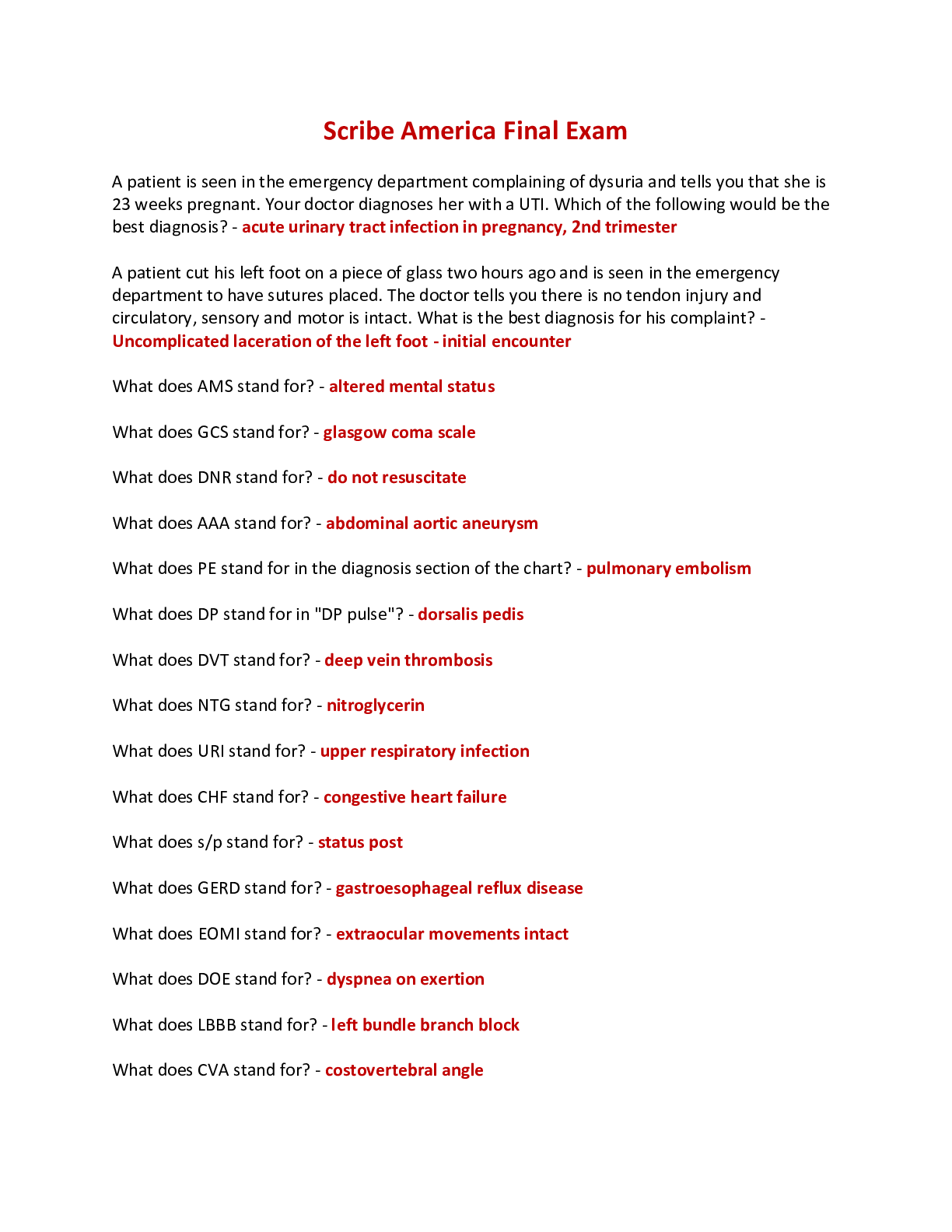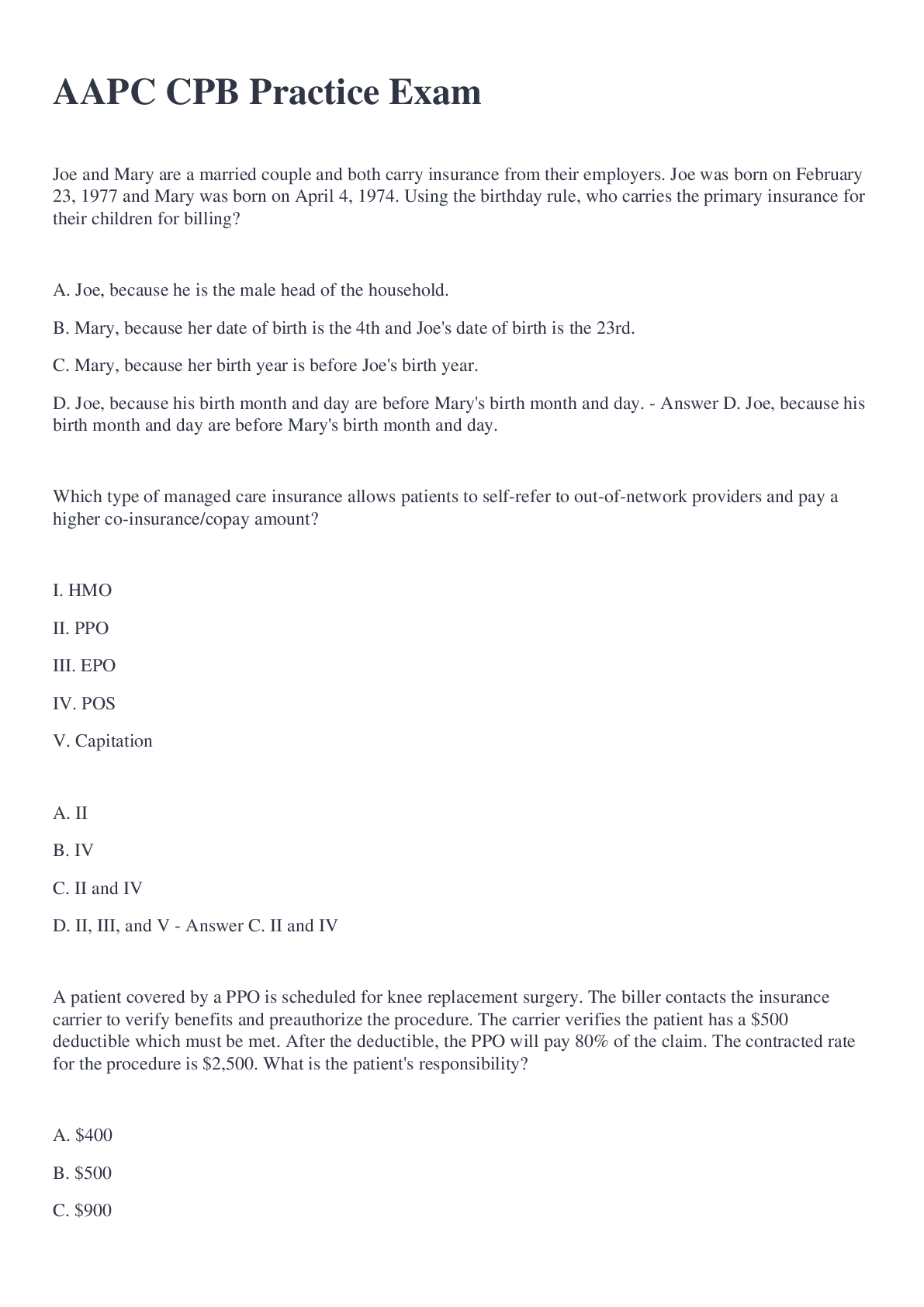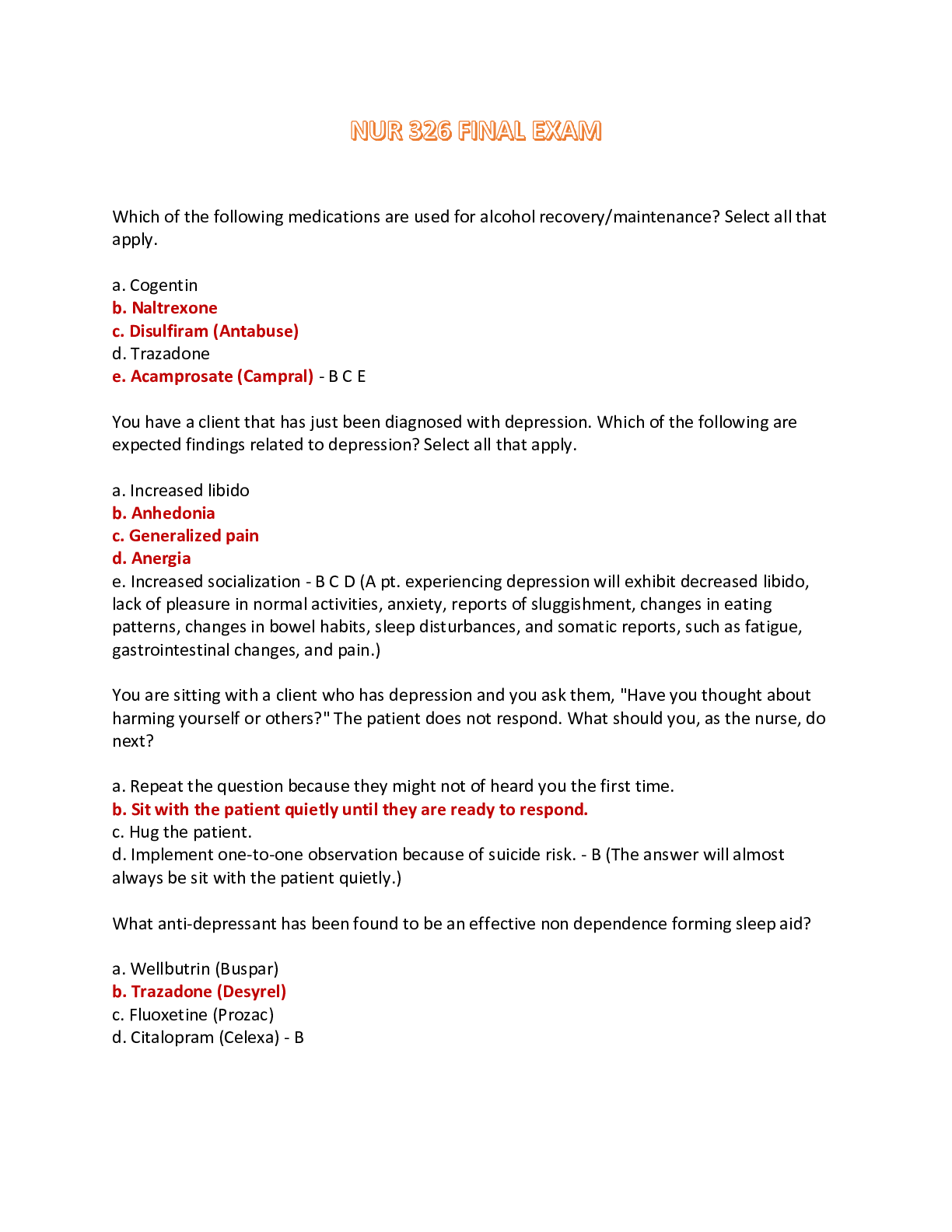Dunphy Primary Care Midterm Review Exam - Questions and Answers
Document Content and Description Below
Dunphy Primary Care Midterm Review Exam - Questions and Answers Sharon, a 47-year-old bank teller, is seen by the nurse practitioner in the office for a red eye. You are trying to decide between a d... iagnosis of conjunctivitis and iritis. One distinguishing characteristic between the two is: 1. Eye discomfort. 2. Slow progression. 3. A ciliary flush. 4. No change in or slightly blurred vision. Martin, age 24, presents to the office with an erythematous ear canal and pain on manipulation of the auricle. He is on vacation and has been swimming daily at the resort. What is your diagnosis? 1. Acute otitis media. 2. Chronic otitis media. 3. External otitis. 4. Temporomandibular joint (TMJ) syndrome. Jill, a 34-year-old bank teller, presents with symptoms of hay fever. She complains of nasal congestion, runny nose with clear mucus, and itchy nose and eyes. On physical assessment, you observe that she has pale nasal turbinates. What is your diagnosis? 1. Allergic rhinitis. 2. Viral rhinitis. 3. Nasal polyps. 4. Nasal vestibulitis from folliculitis. Mrs. Johnson, a 54-year-old accountant, presents to the office with a painful red eye without discharge. You should suspect: 1. Bacterial conjunctivitis. 2. Viral conjunctivitis. 3. Allergic conjunctivitis. 4. Iritis. Susan is a 19-year-old college student and avid swimmer. She frequently gets swimmer's ear and asks if there is anything she can do to help prevent it other than wearing earplugs, which do not really work for her. What do you suggest? 1. Start using a cotton-tipped applicator to dry the ears after swimming. 2. Use ear drops made of a solution of equal parts alcohol and vinegar in each ear after swimming. 3. Use a hair dryer on the highest setting to dry the ears. 4. Stop swimming. Mia, a 27-year-old school teacher, has a 2-day history of severe left ear pain that began after 1 week of upper respiratory infection (URI) symptoms. On physical examination, you find that she has acute otitis media (AOM). She has a severe allergy to penicillin. The most appropriate antimicrobial option for this patient is: 1. Ciprofloxacin (Cipro). 2. Azithromycin (Zithromax). 3. Amoxicillin (Amoxil). 4. Cephalexin (Keflex). Mario, a 17-year-old high school student, came to the office for evaluation. He is complaining of persistent sore throat, fever, and malaise not relieved by the penicillin therapy prescribed recently at the urgent care center. As the nurse practitioner, what would you order next? 1. A throat culture. 2. A Monospot test. 3. A rapid antigen test. 4. A Thayer-Martin plate test. Ellen, a 56-year-old social worker, is seen by the nurse practitioner for complaints of fever; left-sided facial pain; moderate amounts of purulent, malodorous nasal discharge; and pain and headache when bending forward. The symptoms have been occurring for approximately 6 days. On physical assessment, there is marked redness and swelling of the nasal passages and tenderness/pain on palpation over the cheekbones. The nurse practitioner should suspect: 1. Dental abscess. 2. Acute rhinosinusitis. 3. Chronic rhinosinusitis. 4. Nasal tumor. Sally, age 19, presents with pain and pressure over her cheeks and discolored nasal discharge. You cannot transilluminate the sinuses. You suspect which sinus to be affected? 1. Maxillary sinus. 2. Ethmoid sinus. 3. Sphenoid sinus. 4. Frontal sinus. You diagnose 46-year-old Mabel with viral conjunctivitis. Your treatment should include: 1. Gentamicin ophthalmic ointment. 2. Ciprofloxacin ophthalmic drops. 3. Supportive measures and lubricating drops (artificial tears). 4. Oral erythromycin for 14 days. Your client George, age 60, presents with pruritus and complains of lymphadenopathy in his neck. He also complains of night sweats and has noticed a low-grade fever. He has not lost any weight and otherwise feels well. He is widowed and has been dating a new woman recently. On physical exam, you find enlarged supraclavicular nodes. You suspect: 1. Lung cancer. 2. Hodgkin lymphoma. 3. A lingering viral infection from a bout of flu he had 6 weeks ago. 4. Non-Hodgkin lymphoma. Ms. Jones, your client, has an elevated platelet count. You suspect: 1. Systemic lupus erythematosus (SLE). 2. Infectious mononucleosis. 3. Disseminated intravascular coagulation (DIC). 4. Splenectomy. You have a new client, Robert, age 67, who presents with generalized lymphadenopathy. You know that this is indicative of: 1. Disseminated malignancy, particularly of the hematologic system. 2. Cancer of the liver. 3. Sjögren syndrome. 4. Pancreatic cancer. Caroline, 65, is homeless and has iron deficiency anemia. She smokes and drinks when she can and has a stomach ulcer. Which of the following is not one of her risk factors for iron deficiency anemia? 1. Smoking. 2. Poverty. 3. Ulcer. 4. Age greater than 60. The gold standard for definitive diagnosis of sickle cell anemia is: 1. A reticulocyte count. 2. The sickle cell test. 3. A hemoglobin electrophoresis. 4. A peripheral blood smear. [Show More]
Last updated: 2 months ago
Preview 1 out of 38 pages

Reviews( 0 )
Document information
Connected school, study & course
About the document
Uploaded On
Mar 02, 2024
Number of pages
38
Written in
Additional information
This document has been written for:
Uploaded
Mar 02, 2024
Downloads
0
Views
17

